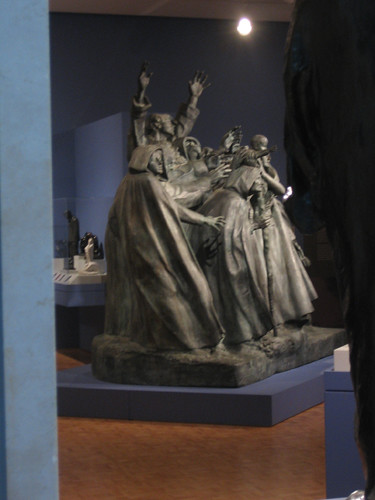
I was very happy to have the chance to see it again last Friday, and was able to spend more time to inspect this work more closely at leisurely pace.
Indeed, the second viewing had revealed many details I didn't take notice at the time when I was blown away by the weighty and dramatic mass as a whole.
Now, I noticed the modulations of the rhythmic lines of the group, the individualism of the faces, etc. I suddenly saw then, that in the middle of this group of blind people, a child, rested on his mother's shoulder and hands, were not blind. He obviously represented hope and future here. The open arms of the man behind him emphasized on the importance of this baby. The baby's right arm stretched out, in a pose could be constructed as blessing, such as baby Jesus does, or like that of the command of Chairman Mao.
Suddenly, this details completely changed my perception of this work. It became very sentimental and lost a great amount of gravity. I believe that the work was created in 1907-08, before the "Great War". I wonder if it were created after World War One, if the sculptor would not impose his optimism upon this group of down-trodden people. Maybe not. Or Maybe yes. Americans are by nature optimistic, almost pathologically so.

I am so disappointed by the artist's failure to be more profound and moving. What a missed opportunity!
Related article: Rodin and Richard Serra in Cantor Art Center, Stanford University





No comments:
Post a Comment